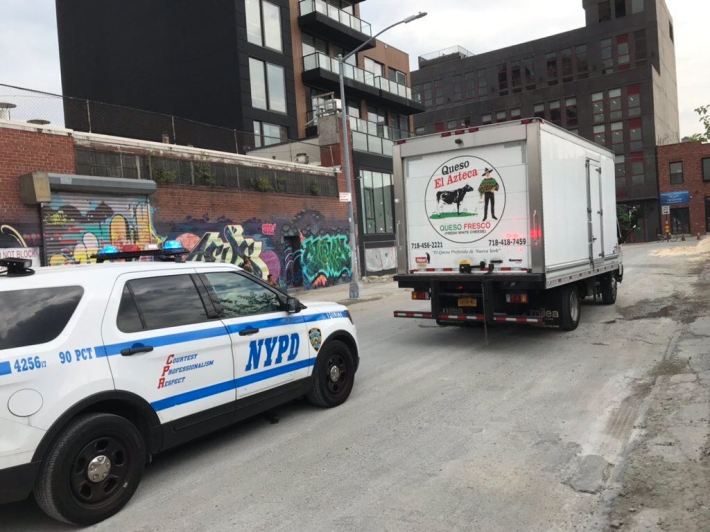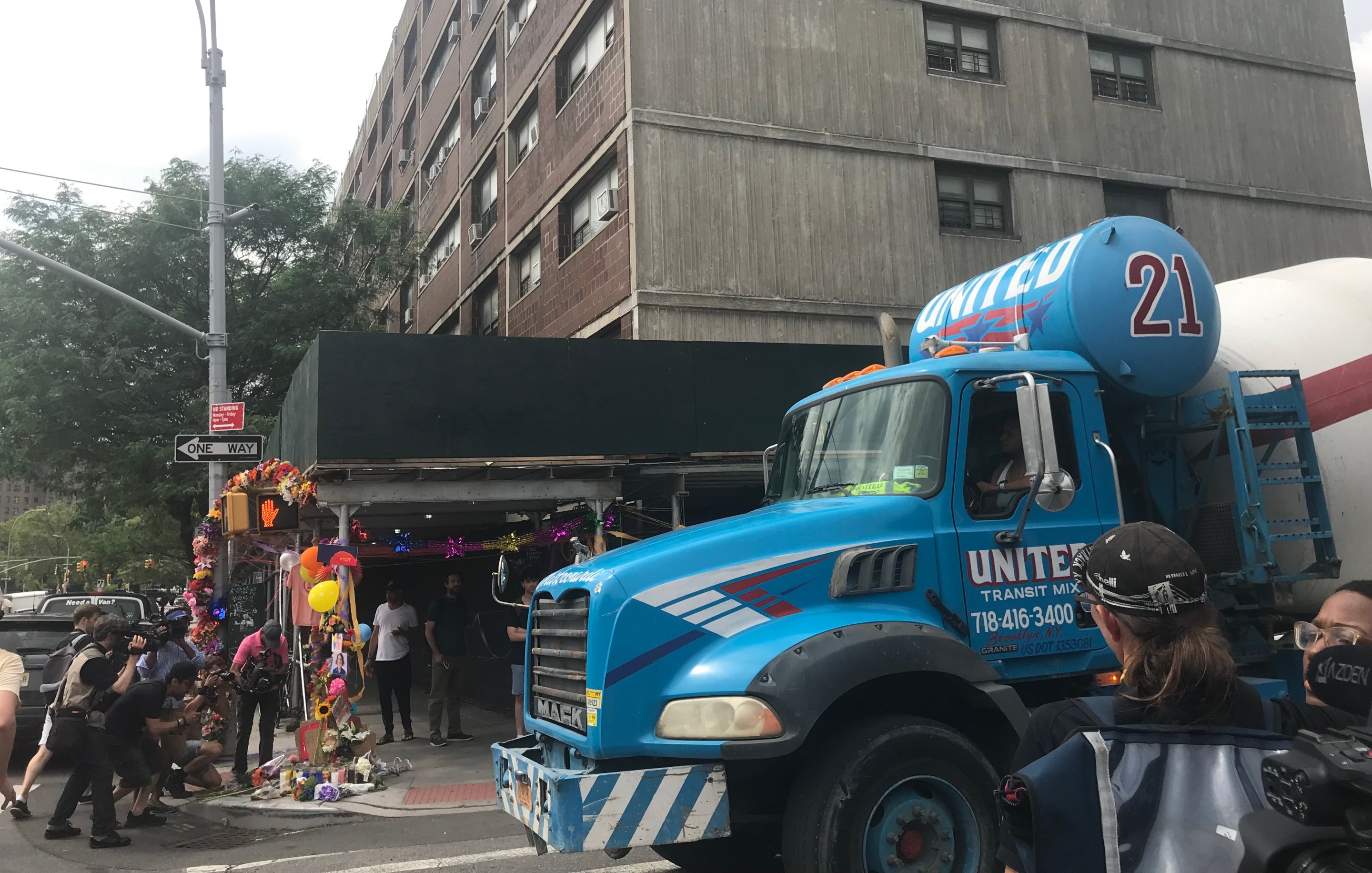About a dozen cops showed up at the corner of Boerum Street and Bushwick Avenue as the vigil exploded into a screaming match between truck drivers and cycling advocates. "Not a truck route!" several mourners yelled.
At one point, a cyclist refused to move from the road as the light turned green, but he was persuaded by other activists to move. Later, a cement truck driver yelled at the mourners, saying, "How are we supposed to see you?" — which appears to be a strong endorsement of keeping trucks off residential streets rather than on them.
"Do your job," one of the cyclists shouted back.
Two cement trucks from the company involved in the killing of Devra Freelander just passed by the vigil. A really emotional shouting match ensued. One truck driver shouting back to cyclists: “[Freelander] made a mistake. How were we supposed to see her? We can’t see everyone.” pic.twitter.com/tP8kYolJoZ
— Vincent Barone (@vinbarone) July 3, 2019
Locals say it's a regular occurrence to see the same cement trucks speeding down the block. One teacher, who works at PS 147 at the corner of Bushwick Avenue and Boerum Street, says he fears for the little kids' lives whenever they have to cross the street.
"They do it all day. We have kids that cross right over here. These trucks, they don't give a damn, I've encountered them," said Robert Bell.
I work across the street from where the young lady lost her life and I always see those cement trucks speeding with no regard for human life.
— Fernando Rapalo (@FernandoRapalo4) July 2, 2019
Cops did not issue any tickets for truck drivers using Boerum Street, which is not a designated truck route. Truckers cannot be on that roadway unless they are making a delivery, according to the Department of Transportation.
The day of outrage is the latest effort by activists to demand change from a political system that favors drivers over other road users, even in the midst of the unprecedented death of 15 cyclists in the first six months of this year. Hours before Wednesday's vigil, activists confronted pro-parking residents of the Upper West Side — and came away with a rare victory as the neighborhood's community board strongly supported the city's plan for a protected bike lane on Central Park West.
More anger followed the announcement Tuesday of a paltry three-week enforcement blitz by the NYPD instructing officers to write more moving violation and bike lane blocking tickets — violations that the NYPD has long been charged with preventing. After the NYPD plan was announced, Transportation Alternatives announced it would host a massive "die-in" in Washington Square Park to express the group's position that the city is simply not doing enough.

Brooklyn Council Member Antonio Reynoso, who represents the district, demanded cops stop trucks from driving down Boerum Street — a residential block — and figure out a way to make their routes safer before another cyclist is killed.
“They shouldn’t be on Boerum in the first place," Reynoso said. "Trucks routes exist so trucks can be on them bc they are safer these small residential trucks are dangerous for large trucks to be on them. So no matter what no matter how convenient it is for them it is not safe for the public.”
It is unclear if police issued tickets to the cement truck drivers, but cops did write a ticket to a Mexican food delivery truck driver. Police on the scene declined to comment.

Large trucks are only 4% of the U.S. vehicle fleet, but cause 7% of pedestrian and 11% of bicyclist deaths. How can cities take action? By downsizing vehicles and improving direct vision from cabs. Trucks should support safe streets, not undermine them. https://t.co/mZNQKwweJB
— NACTO (@NACTO) June 25, 2019
According to the Department of Transportation, trucks are allowed to use residential streets, but only under certain circumstances.
"Boerum Street is not a designated truck route," said DOT spokesman Brian Zumhagen, but added, "It is legal [for truckers to be on such a street] when they are in the act of making a local delivery or from the place of origin. Truck operators must have a bill of lading, or similar document, showing the points of origin and destination of the trip on their person throughout each trip. If the operator has additional destinations in the immediate vicinity, he/she may proceed by the most direct route to his/her next destination without returning to a designated truck route, provided that the operator's next destination does not require that he/she cross a designated truck route. Additionally, all trucks must adhere to all posted signs indicating locations that limit the height of vehicles permitted to operate thereon."
In an interview with Streetsblog earlier today, Department of Transportation Commissioner Polly Trottenberg said that her forthcoming "cycling safety plan" would include something to reduce the carnage caused by truck drivers, who are responsible, Trottenberg said, for about half of this year's cyclist deaths.
— with Gersh Kuntzman






